The Rotunda, University of Virginia
Introduction
Text-to-speech Audio
Images
The most recognizable symbol of the University, the Rotunda stands at the north end of the Lawn and is half the height and width of the Pantheon in Rome, which was the primary inspiration for the building.
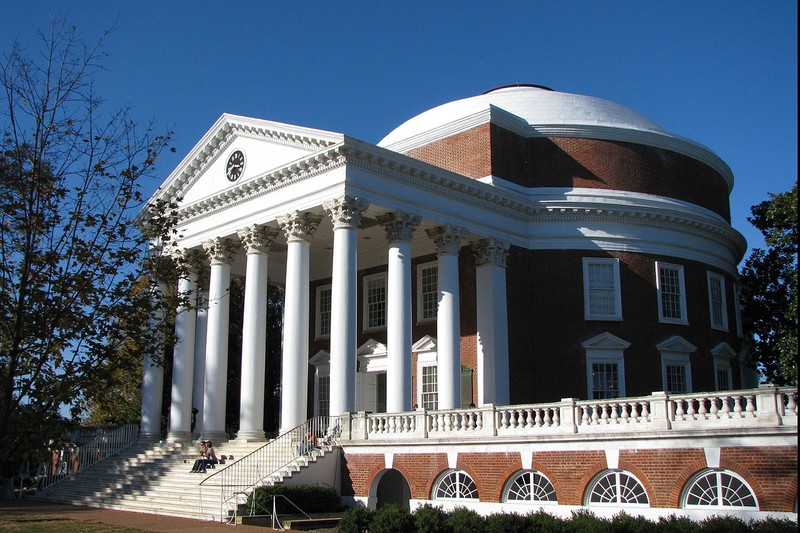
In 1895, the Rotunda was severely damaged by a fire
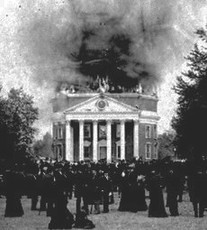
The University of Virginia: A Pictorial History-Click the link below for more information about this book
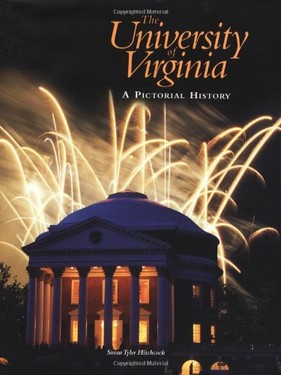
1819 draft of the Rotunda by Thomas Jefferson. Courtesy of the Library of Congress
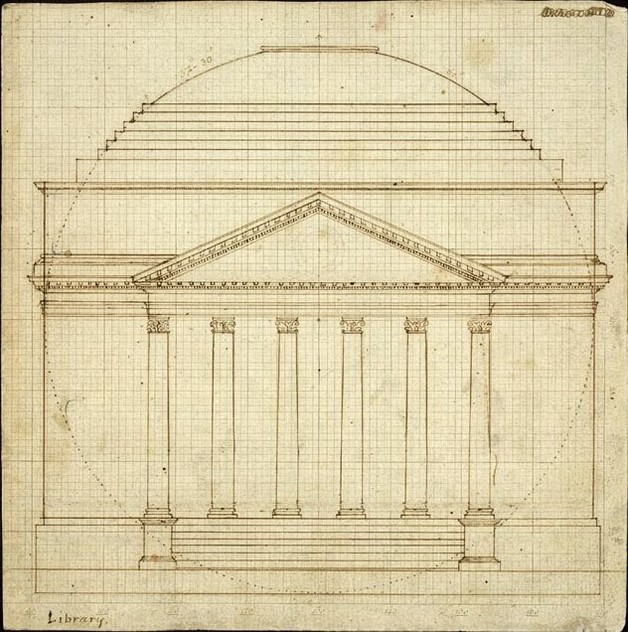
Interior of the Dome Room as it looks today. Courtesy of the University of Virginia
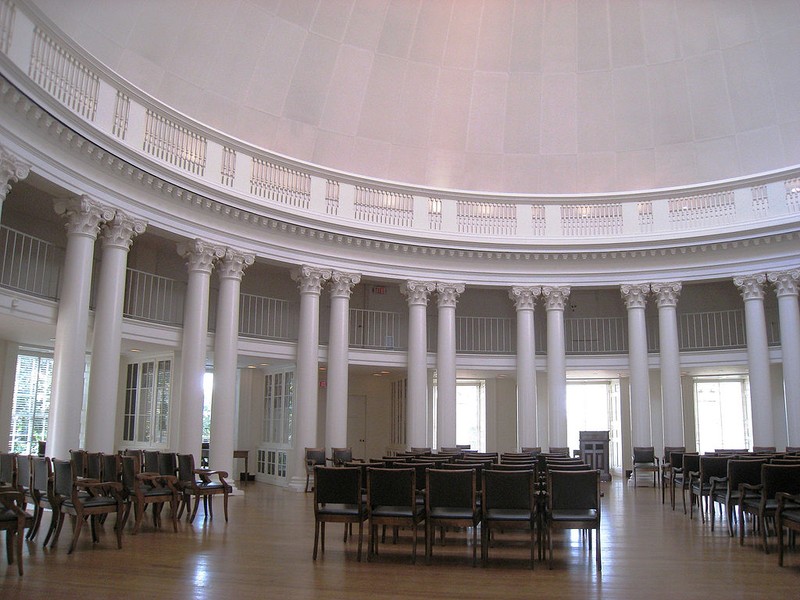
Ruins of the Rotunda Annex from the 1895 fire. Courtesy of the Library of the University of Virginia.
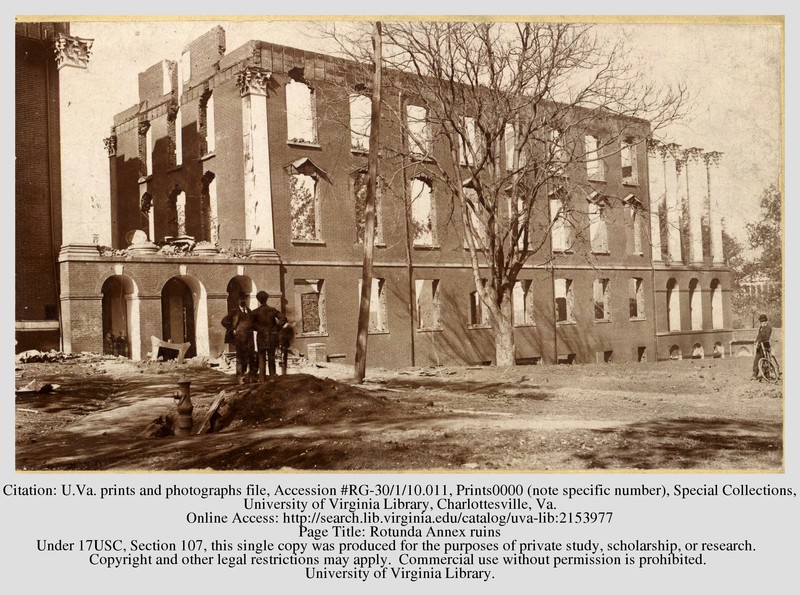
The reconstructed Rotunda in 1898. Courtesy of the Library of the University of Virginia.
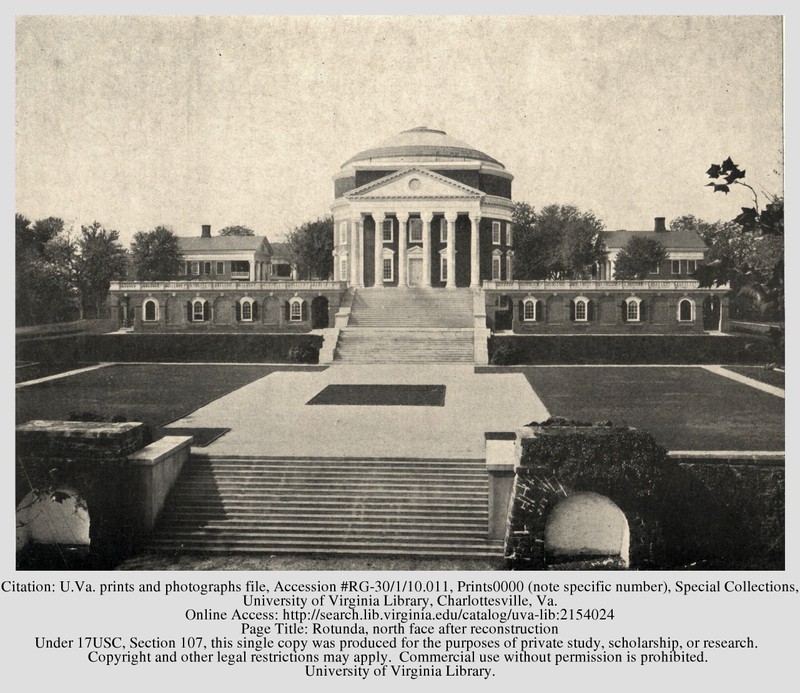
Drawing of the Rotunda, 1846. By Peter S. Duval. Courtesy of the Library of the University of Virginia.
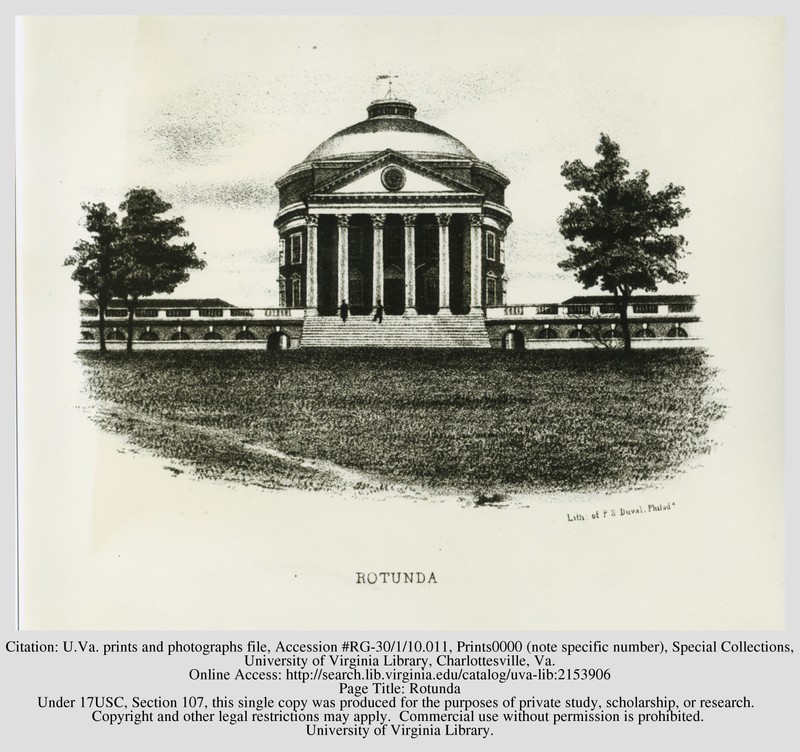
1876 drawing of the Rotunda by W.G.R. Frayser. Courtesy of the Library of the University of Virginia.
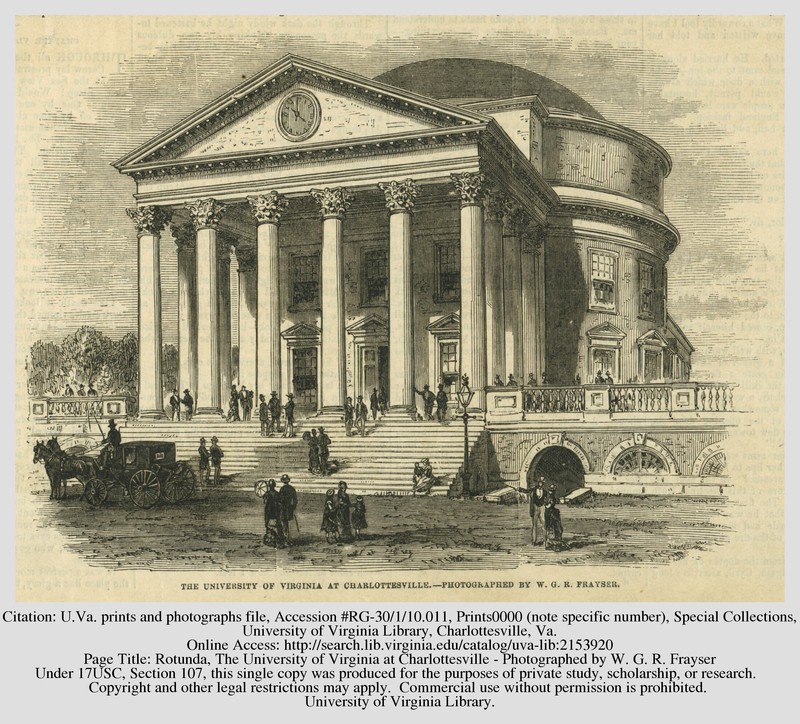
Backstory and Context
Text-to-speech Audio
In 1895 a fire burned all but the brick foundations of the building. First hand accounts note that students worked to remove the educational materials that they could before the fire engulfed the building. Because the dome and the additional annex of the building were entirely built of wood they were completely destroyed in the fire.
The Rotunda was rebuilt from 1898-1899 by McKim, Mead, and White of New York. The design was modified slightly by Stanford White. White included a fireproof dome that was larger than Jefferson's original and did not rebuild the Annex.
In 1972 the US Bicentennial Committee sought to restore the Rotunda to Jefferson's original design. The dome was restored to three stories, the skylight was given a simpler design, and the interior design choices made by White in 1899 were restored to the original design. The construction was completed by 1976 for the Bicentennial.
